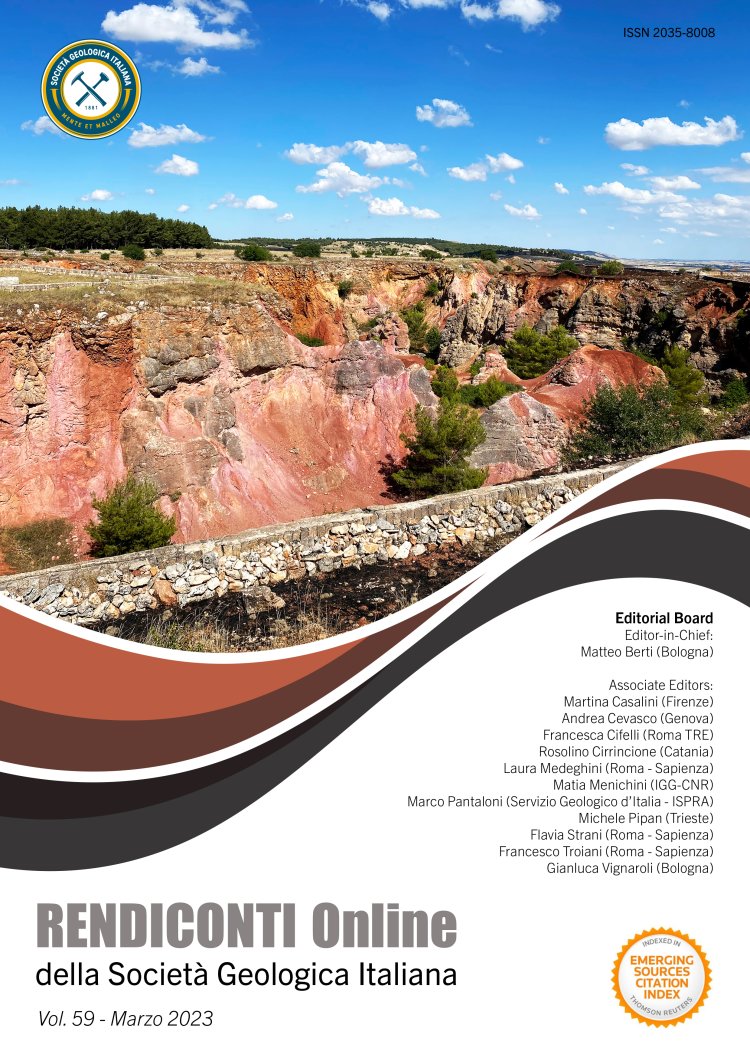
Messinian resedimented gypsum (branching-like facies) from the Catanzaro Basin (Calabria, Southern Italy): petrographic and geochemical evidence for paleoenvironmental reconstruction
Mara Cipriani1, Rocco Dominici1, Alessandra Costanzo2, Giovanni Vespasiano1, Carmine Apollaro1, Domenico Miriello1, Giuseppe Cianflone1, Francesco Perri1, Massimo D’Antonio3, Giuseppe Maruca1 & Adriano Guido1
1Department of Biology, Ecology and Earth Science, University of Calabria, Arcavacata di Rende, 87036 Rende, Italy.
2Earth and Ocean Sciences, School of Natural Sciences, University of Galway, H91 TK33, Galway, Ireland.
3Department of Earth, Environmental and Resources Sciences, University of Naples Federico II, 80126 Napoli, Italy.
Corresponding author e-mail: mara.cipriani@unical.it
Volume: 59/2023
Pages: 35-39
Abstract
A multidisciplinary approach allowed to investigate the formation and evolution of gypsum blocks within the Riato Conglomerate outcropping in the Catanzaro Basin (Calabria, Southern Italy). Macroscopically, the gypsum blocks seem to belong to the branching facies (primary facies) known in literature, however microscopic observations reveal a detrital origin (secondary facies). Indeed, the gypsum blocks show an alternation of laminae made of selenite clasts (100 to 500μm) and of fine matrix engulfing relicts of selenite crystals (<100μm) suggesting a clastic nature for these blocks. Crystal’s remains have sub-euhedral shapes and display a bright epifluorescence core under Ultraviolet (UV) light. The matrix is made of amorphous material that engulfs very fine relict crystals. UV-epifluorescence observations reveal the organic nature of the matrix. Strontium isotope ratio (87Sr/86Sr: 0.70904), obtained on the relict selenite clasts allow to ascribe these facies to the first stage of the Messinian Salinity Crisis (5.97-5.60 Ma). This data enables to prove the presence of a primary selenite deposit (dismantled) in the Catanzaro Basin.
The gypsum blocks investigated show very similar features with the branching- like facies recognised in the Ionian Forearc Basin (Benestare, Calabria, Southern Italy). These deposits experienced reworking processes as a consequence of local perturbation of the basin due to the major relative sea level fluctuations that were affecting the whole Mediterranean area.
Keywords
branching-like facies, Messinian Salinity Crisis, fluid inclusions, organic matter, strontium isotopes.
Get Full Text